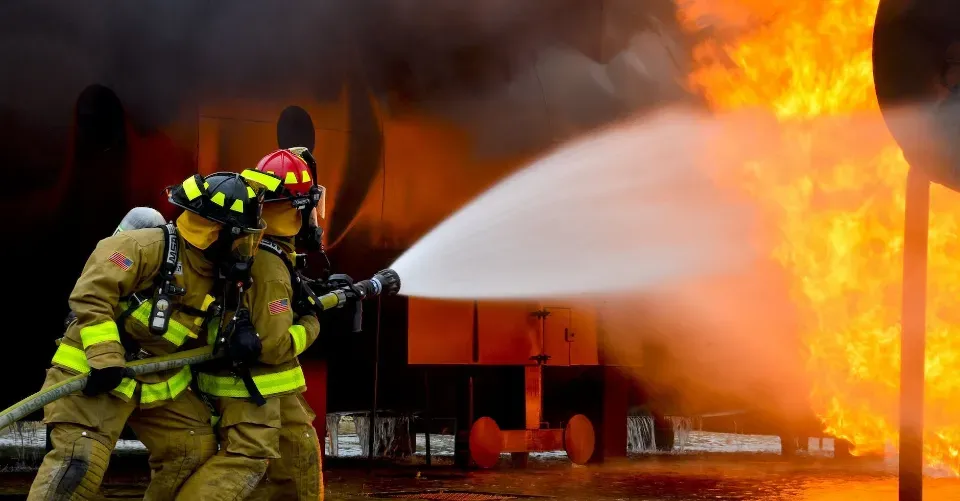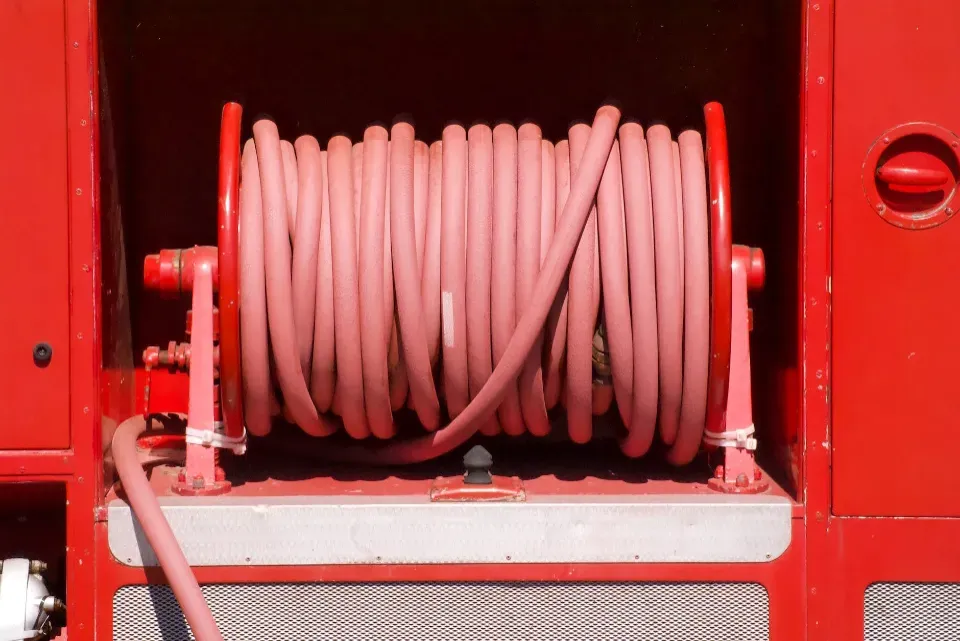
How Much Water Does a Fire Truck Hold?
The most crucial tool a firefighter has at their disposal to put out a fire is water, which should come as no surprise. When used in sufficient amounts, water is inexpensive, easily accessible, and very effective at putting out fires. However, carrying some water to the fire helps, so how much can they hold? They can get some from the fire hydrant.
Water capacity for fire engines ranges from 300 to 1250 gallons. Most typical fire engines you see carry 500 to 750 gallons of water. Fire trucks do not carry any water, except for some specialty types called Quints.
You should be aware of the following information regarding water resources for firefighters and how they affect fire engines and fire trucks.
What is a Fire Engine?
A fire engine is a vehicle used to transport hoses, equipment, and water. That’s why many people in the service call a fire engine a “pumper”.
Ladders, typically the kinds that the crew can remove and reposition as needed, and some crew may also be carried by a fire engine. Considering that a fire engine is frequently the first vehicle on the scene, you might also discover that it is equipped with a significant number of EMS (Medical) tools.
Thus, every fire engine has a water tank on board in order for it to be able to supply some water to fight a fire and start “pumping” the moment that the fire engine arrives on the scene if needed.
Therefore, the firefighting team can start working right away after yanking a hose line. Because if a fire in this kind of location gets out of control, this is crucial if there isn’t a nearby source of water.
How much water can a fire engine carry? The water capacity of a fire truck, which is at least 2000 gallons or more, is sufficient to extinguish fires.

How Much Water Does a Fire Engine Hold?
They can hold between 300 and 1,250 gallons of water, on average 500 gallons, depending on the type of fire engine.
For a fire engine, 300 gallons are the minimum requirement.
There are seven different types of fire engines, and each has specific needs for the amount of water it can carry.
It is also possible to attach what’s known as a “drop tank” to a fire engine which can add up to another 2,000 gallons of water to the supply of water for a fire engine.
Up to 60,000 lbs. are the weight of a fully loaded fire engine. and much of that weight is due to the water that it carries in its reservoir.
What is a Fire Truck?
In contrast, the delivery of water to a scene typically does not involve a fire truck. As you can imagine the 750-gallon (or so) reservoir on the main fire engine takes up an enormous amount of space.
As a result, there is a practical limit to the amount of room that can be set aside for crew and equipment. Consequently, a fire truck serves as a fire engine’s support vehicle. It carries all the tools and any additional crew needed to fight the fire.
In addition to putting out the fire, they are typically given other tasks at a fire. Forcible entry techniques include things like ventilation, door-breaking, and search and rescue.
The use of power tools, rescue equipment, and more may be found. on a fire truck but you’re not likely to find any extra water.
How Much Water Does a Fire Truck Hold?
The typical fire truck has no water capacity. Water delivery to the scene is not the role of a fire truck. It transports equipment and firefighters to simplify the process of putting out a fire.
There is one exception; it’s known as a Quint. This has a pump and a water tank, which typically holds 500 gallons of water, in addition to the standard aerial ladder that trucks have.)
How Quickly Does a Fire Engine Use All of Its Water?
500 gallons is a lot of water.
For instance, an 8-minute shower takes the average American just 17.2 gallons per day.
That means you could take 43 and a half showers from the reservoir on a fire engine before it ran dry.
However, a pumper can move 2000 gallons per minute! The 500-gallon supply can therefore, despite sounding large, run out in as little as 15 seconds when fighting a fire.
This is one of the reasons that it may be vital for firefighters to get another water source as quickly as possible. The onboard water tank is really just there to get things going until more water can be obtained.
There is never enough water to put out a large fire in the middle of the woods, which can give you an idea of the difficulties that those fighting wildfires face if you’ve ever wondered how forest fires get so big.
How Does a Fire Engine Get More Water to a Fire?
This doesn’t mean, however, that a fire engine is always without other water sources, and the most typical way for a fire engine to get water is by tying into a hydrant.
All hydrants serve to do is supply water for fighting fires, and they can be found in urban areas as well as rural areas close to water mains.
This supply reduces the need for separate water supplies to be shipped to the scene of the blaze.
If there isn’t a hydrant nearby, the fire engine might find water elsewhere. When necessary, the fire department frequently draws water from lakes, streams, and even swimming pools.
There are some strange legal issues surrounding the use of swimming pool water in some jurisdictions, but in an emergency, it is preferable to use the water than to let something burn.

Do Firefighters Use Regular Water?
Firefighters need a lot of water to extinguish fires and use whatever water sources are available to them. To obtain a constant water supply, firefighters frequently attach hoses to fire hydrants. In addition, Cal Fire has its own water sources at ponds, facilities, and reservoirs that can be used in an emergency. Additionally, Cal Fire personnel occasionally have access to water from private swimming pools. Despite the fact that draining a pool can take a while, it can yield a sizable amount of water that can be used to put out fires.
How Do Fire Trucks Refill Water?
Each second counts when battling a fire. Fire trucks must be able to quickly and effectively refuel their water tanks for this reason. The primary water tank on a pumper/tanker fire engine holds 1,000 gallons of water and is located in the center of the truck’s rear. A drop tank is an aboveground swimming pool with a capacity of about 2,000 gallons.
The fire truck simply pulls up next to the drop tank and transfers the water using a hose to refill the primary water tank. The fire truck can quickly resume operations after this procedure is finished, which only takes a few minutes. A fire truck can draw water from nearby lakes or ponds in addition to filling up its water tanks. This method, though, is considerably more time-consuming and is generally reserved for emergency situations.
Conclusion
A fire truck can pump and hold a lot of water. In order to put out fires, firefighters must use a lot of water, from whatever sources may be available. When you see a fire truck speeding down the street, remember that they are in a race against time – and gallons per minute can make all the difference.



Average Rating